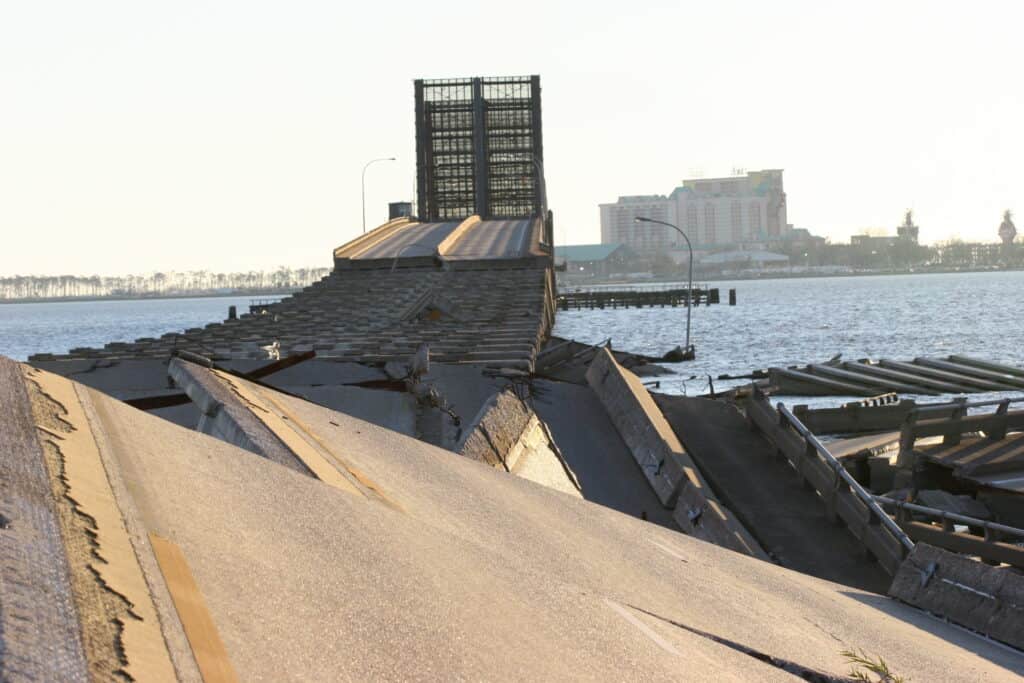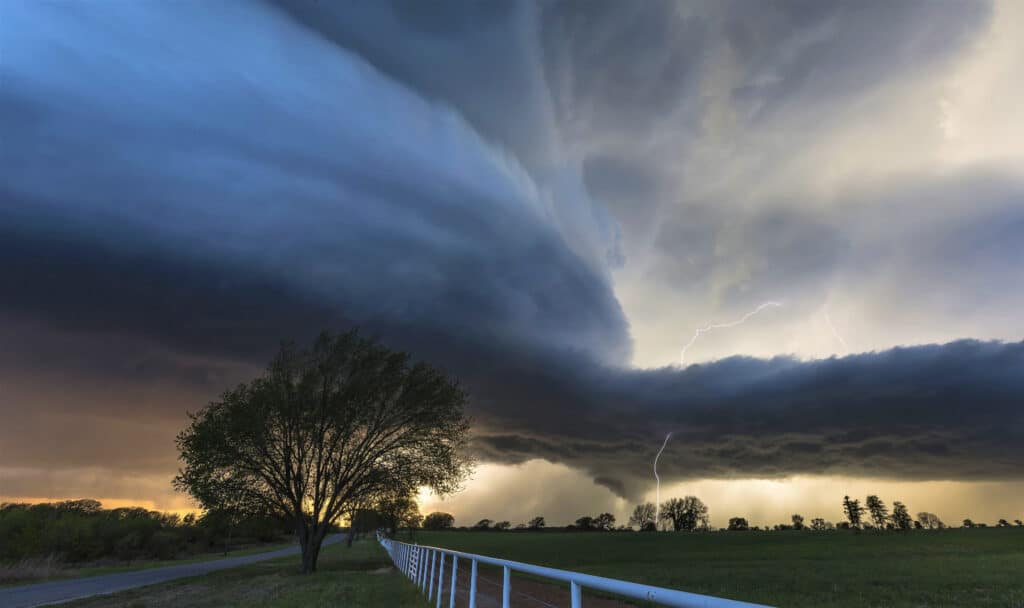Tropical storms and hurricanes revolve around the calm eye in the middle of the storm. Although hurricane eyes can vary in size from just a few miles to several hundred miles, they typically range in diameter from 20 to 40 miles. The hurricane eye often gets smaller as it gains strength.
There are other online resources on hurricane survival that go in-depth about the risk the eye may present. People in the hurricane’s eye frequently believe the danger has passed and that it is safe to venture outside.
People who have been caught in the eye of a hurricane need to keep taking cover and, at the very least, be ready for something worse. The hurricane’s strongest winds, known as eyewall winds, are around the central eye.
You may instantly transition from the eye’s relative quiet to the wall’s 150 mph gusts. On the ocean, being in a hurricane’s eye is a very different sensation. The crashing gusts are actually pushing water in every direction, creating enormous waves in the eye that are over 100 feet high.
The History of Hurricanes

©Robert A. Mansker/Shutterstock.com
Currently, hurricanes are among the most damaging natural catastrophes. Every year, they inflict property damage and fatalities. The Great Galveston Storm, the largest hurricane ever recorded, struck the United States in the early 1900s, per the National Hurricane Center. The catastrophic hurricane caused an estimated 8,000 fatalities and $25 billion in damage in today’s money.
This statistic illustrates how catastrophic storms may be, which makes it crucial for your family to comprehend them and be ready. What exactly are hurricanes, and how do they develop? Hurricanes are enormous storms that scour the tropical seas of the planet.
They are also known as cyclones and typhoons in many other areas. Hurricanes are most often found in tropical regions, such as the Caribbean Sea, eastern Pacific Ocean, southern Atlantic Ocean, and the Gulf of Mexico.
The Formation of a Hurricane
Cyclones are formed when warm water, moist warm air, and weak upper-level winds combine. Hurricanes form when rapidly rising volumes of warm, humid air from ocean surfaces combine with larger masses of colder air. Warm water vapor is caused to condense as a result of the impact, eventually creating storm clouds and returning as rain.
Latent heat is released while the condensation process takes place. The chilly air above is warmed by the latent heat, which causes it to rise and make room for the warmer, more humid air that comes from beneath, at the ocean surface.
As the storm intensifies, more warm, moist air is drawn in, and a great deal of heat is transferred from the water’s surface to the sky. Due to the continuous energy transfer, a wind pattern that resembles water flowing down a drain emerges, revolving around a relatively calm core.
The spinning storm will continue to strengthen and eventually transform into a hurricane if circumstances stay the same, indicating that there is sufficient energy for the storm to keep building. A hole at the center of the storm known as the eye emerges when it keeps getting stronger and is powerful enough.
Parts of a Hurricane
Around the storm, rain bands that are hundreds of miles long transport rain, clouds, storms, and even tornadoes. It is at this point that the hurricane area starts to circle the rest of the storm. The eyewall, which starts to form near the storm’s core as it intensifies owing to convection and air rising higher, is closest to the storm’s center.
Whereas severe thunderstorms and powerful winds are present in this eyewall, the hurricane’s eye is located right in the middle of the storm. In actuality, the development of a hurricane’s eye helps meteorologists and weather forecasters to gauge the hurricane’s intensity. Fewer clouds are seen in the eye, and the wind speed is decreased.
Why Does a Hurricane Eye Form?
On the precise process through which a hurricane’s eye is produced, researchers are still at odds. One widely accepted explanation is that it is the effect of the winds being weakened by the pressure falling downward.
Another hypothesis claims that the energy generated by the eyewall, which forces the air inside the core of the storm downward, is what causes the hurricane’s eye. But one thing is certain. The air condenses and warms up as it descends. The water behind the eye becomes buoyant as a result, rising and generating waves.
The storm’s eye is ultimately responsible for its extremely high wind speeds. There are times when the rainbands are so strong that they create a second eyewall within the cyclone. As the second eyewall advances, it finally engulfs the first. The eyewall replacement cycle is the name given to this phenomenon.

Tornados often form as part of the hurricane system.
©artofvisionn/Shutterstock.com
Interesting Facts About Hurricanes
While hurricanes are terrifying, costly, and incredibly destructive, they’re also quite interesting. Here are some of our favorite facts about these massive storms.
- Florida is the target of 40% of hurricanes that strike the United States.
- A normal storm may cover a region with 6 inches to a foot of rain.
- In 1780, the Caribbean islands saw The Great Hurricane, which is believed to have hit Barbados. Its location of genesis is unknown, but it was one of the worst storms in the Atlantic with almost 20,000 fatalities.
- Tropical storms typically produce winds of 36 to 47 mph, while hurricane wind speeds are at least 74 mph. This is the main difference between the two.
- Even though Hurricane Floyd was only a category I storm, it nevertheless managed to uproot 19 million trees and inflict over $1 billion in damage.
- In the United States in the month of August, hurricanes are responsible for 20% of tornadoes. Furthermore, the majority of the tornadoes that storms produce are weak and don’t persist long on land. This percentage might reach 50% in September.
Up Next…
- Discover The 10 Wettest States in the United States
- 8 Islands in the middle of the Atlantic Ocean
- The Biggest Animals Ever: 5 Giants from the Ocean
- A Volcano Filled with Sharks Just Erupted in the Pacific Ocean
The photo featured at the top of this post is © aappp/Shutterstock.com
FAQs (Frequently Asked Questions)
Is the eye of a hurricane safe?
With the skies largely devoid of clouds, wind, and precipitation, the center of the eye is by far the calmest region of the storm on land, which doesn’t make it the safest. Yet, it’s also the most hazardous because within, waves collide with one another and bash against one another, generating monster waves that may reach 130 feet in height.
How long does a hurricane last?
Not the wind speed, but the size of the eye and the speed of the storm will determine how long it takes for it to pass over you. It will take around two hours for the eye to pass if the eye is 40 miles wide, the storm is traveling at 20 miles per hour, and the center passes directly over you.
Can a hurricane have two eyes?
As scary as it sounds – yes. This is rare and only happens when two cyclones form together and temporarily have two eyes until it converges into one massive storm.
Thank you for reading! Have some feedback for us? Contact the AZ Animals editorial team.






